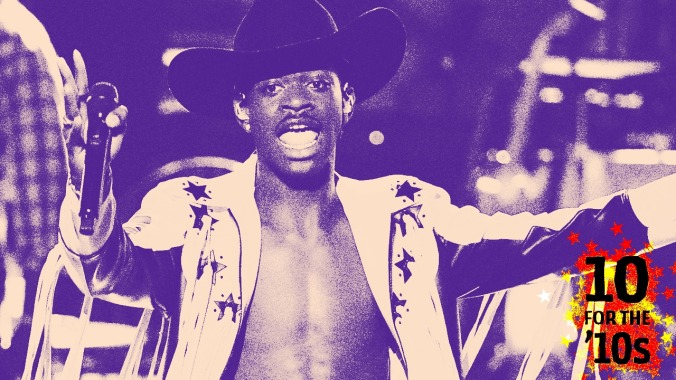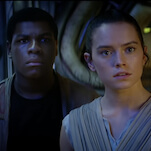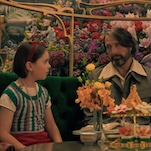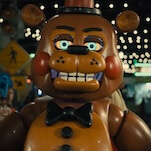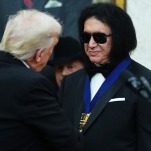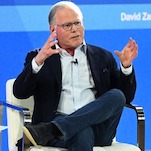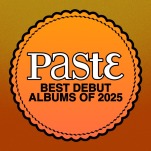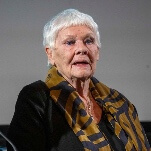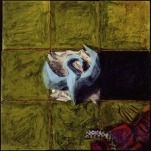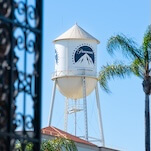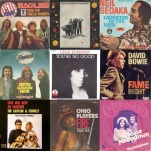In 10 For The ’10s, The A.V. Club looks back at the decade that was: 10 essays about the media that defined the 2010s, one for every year from 2010 to 2019. Today: 2019, “Old Town Road,” and art that became intertwined with memes.
It’s easy to forget that “Old Town Road” was a meme before it was a hit. Lil Nas X’s ubiquitous, indelible blend of trap and country initially blew up as a dance challenge on TikTok. The song was good enough to break free from social media and hitch its spurs to a handful of different Billboard charts, but it wasn’t the hook that kept it there. First, it was controversy: There was ample blowback when Billboard declared the song wasn’t country enough for its country chart. With the entire music (and country) community by his side, Lil Nas X milked the goodwill for all it was worth. Billy Ray Cyrus, whose “Achy Breaky Heart” is a meme in spirit, lent a verse. Soon, the ever-viral Diplo provided a remix and starred in the song’s music video with Vince Staples and Chris freakin’ Rock. In the midst of it all, the memeable likes of Guy Fieri and Game Of Thrones were drawing upon its power, making it stronger. And the rapper, a 20-year old who grew up consuming memes, saw the potential. He made appearances bound to go viral via iPhone camera footage and scored a remix from the yodeling Walmart boy that manifested in a video featuring other hot topics of the moment in Keanu Reeves and Area 51. He courted beloved icons like Dolly Parton, and even linked up with BTS’ RM, an appeal to the lucrative horde that is K-pop fandom. After an astounding 19 weeks, “Old Town Road” was booted from atop the Billboard Hot 100 by Billie Eilish’s “Bad Guy,” which is fitting since that song was also memed into oblivion.
“Old Town Road” wasn’t the only piece of pop culture to go viral in 2019, but its virality was weaponized, calibrated, and executed in ways that will undoubtedly shape the way artists create and disseminate in the future. The rise and reign of “Old Town Road” was so attuned to the culture of 2019 that it might seem as if Lil Nas X cracked the code—but there’s one lingering question: How do you go viral in the first place?
HBO’s five-part
Chernobyl series will emerge as one of 2019’s most memorable dramas, its gruesome, encompassing exploration of the myriad of factors that contributed to the radioactive disaster having tapped into both our souls and our collective anxiety over the climate change crisis. What’s more? It will emerge as one of 2019’s most flat-out popular shows. Between its May 6 debut and its June 3 finale, the show amassed a
cumulative audience of roughly 8 million, besting buzzy HBO hits like
Veep and
Barry while nipping at the heels of
True Detective’s latest season. It even broke a digital viewership record previously held by
Game Of Thrones.
But nobody would’ve guessed that after its modest debut. Unlike most shows, which start strong and shed viewers, Chernobyl’s audience nearly doubled over its run. In fact, in this content-choked ecosystem, it didn’t really land on our radars until it began flooding our timelines—not in the form of reviews or essays, but in memes. Online, this dire, soul-crushing series about an existential catastrophe that resulted in an untold number of deaths was being unpacked in tweets, videos, and Tumblr posts that mashed it with The Simpsons, Game Of Thrones, and Jonathan Frakes’ Beyond Belief: Fact or Fiction.
This trend of reacting to a show via memes isn’t new, nor is it distinct to Chernobyl. Game Of Thrones, which ended its eight-season run as Chernobyl was ramping up, spawned a handful of organic, ubiquitous memes with every episode of its latter seasons, the likes of which spread like neon green wildfire. They were conversation starters in the online ecosystem, malleable vehicles for mulling over the show’s emotional beats and frustrating fails. They’re the new water cooler.
But Chernobyl was different. If Game Of Thrones memes were a way of prolonging the conversation, Chernobyl’s were a means of starting one. This is a rarity for a show as deadly serious Chernobyl, one that arrived with little hype in an unconventional Monday time slot in the shadow of the world’s most popular piece of pop culture. The unconventionality, of course, is what made the memes stand out, and likely what made its young fans so keen to make them—there’s something twisted and darkly funny, after all, about grafting the language of a shit-poster onto a grim historical document. So, sure, the eventual reviews and essays played a part in the show’s trending popularity, but the memes came first. And their effectiveness shouldn’t be understated; online, at least, a critic’s recommendation will never have the same pull as the desire to be in on the joke.
Just look at Bird Box, the meme that rang in 2019. Whatever initial buzz Sandra Bullock’s starring role in the Netflix thriller had curdled as bad-to-lukewarm reviews for the film rolled in. But there was so much memetic potential to the story’s premise—apocalypse arrives via creatures that drive you to suicide if you so much as look at them—that the photoshops, remixes, and “Bird Box challenge” videos became unavoidable, so much so that Netflix was accused by some of manufacturing them. It’s easy to see why someone might think that—according to Nielsen, Bird Box played to nearly 26 million U.S. viewers in its first week of availability. And, lest you think those numbers exist independently of the memes, take it from the viewers themselves. “I only watched Bird Box for the memes,” a Netflix user told The Ringer back in January. “After the scene with the guy forcing the old women’s eyes open, I stopped watching the movie. I got enough context to know what the memes were and after I read a spoiler on Twitter (while I was watching the movie) I really didn’t think I needed to watch more.” And they weren’t the only one who didn’t want to feel left out. The tweet below has more than 12,000 likes.
Chernobyl and Bird Box both benefitted from their memes, but the nature of those memes, much like their critical reception, couldn’t have been more different. While Bird Box memes and much of the subsequent discussion tended to be about anything but the actual movie—the jokes primarily circle around the concept of willful blindness—the Chernobyl memes were hyper-specific to the disaster as depicted on the series, with the dosimeter readings, dialogue, dates, and character names frequently being part of the joke. That odd fidelity to the source material is its own kind of reverence, a nod to the fact that the people making these memes actually liked the show. Vox’s Aja Romano writes that Bird Box memes were “explicitly about sidestepping the movie’s terror and apocalyptic drama to humorously perform denial about all the terror and drama.” Chernobyl, however, is so impactful that there’s no sidestepping it—there’s only embracing the horror in all its specificity. The gulf between them truly manifests, however, in how Bird Box is, just a year on, remembered only for its memes, while Chernobyl just landed on The A.V. Club of the best shows of the decade.
HBO’s Succession grew in popularity in much the same way as Chernobyl, its own abundance of memes growing along with it. Succession, obviously, isn’t scary in the same way as Chernobyl, but, by focusing on the thoughtless whims of billionaires and the existential crisis of corporate monopolization, it’s similarly been co-opted by meme-makers to help contend with our own anxieties about our world’s Roys, be they Trumps or Zuckerbergs. Consider it a way for the relatively powerless to defang the oppressors, at least in the online bubbles in which we operate.
In a recent piece in GQ, writer Louis Staples asks if GIF-able moments are “ruining television,” citing inauthentic moments in otherwise great series that feel explicitly designed for quote tweets and pithy captions. The piece primarily cites Meryl Streep’s scream in the second season of Big Little Lies, as well as HBO working directly with meme creator Giphy to create shareable bits of content. As well HBO should: 495 scripted shows were released in 2018 alone; there’s no shortage of content, and keeping a show in the conversation after it wraps is vital to enduring success. Netflix, for example, has started social media accounts devoted to sharing memes of its flagship shows, such as Ryan Murphy’s The Politician. But when’s the last time you saw a Politician meme? Probably on The Politician’s account.
And that’s the problem. The best, most enduring memes are organic, born from a number of factors that are nearly impossible to predict. Ari Aster’s Midsommar wasn’t as celebrated as last year’s Hereditary, but something about the combination of its aesthetic and sky-high emotional stakes permeated the zeitgeist even more than its predecessor. (It helped that Aster loaded his movie with Easter eggs, a move that also boosted the online presence of Netflix’s Haunting Of Hill House). It’s the recycling of these memes that’s given the film an even longer shelf life than Jordan Peele’s Us, another anticipated, lauded 2019 horror movie.
Todd Phillips’ The Joker, too, has enjoyed a healthy online life, but its memes are perhaps less indebted to its iconography than it is the controversies that plagued the film prior to its release. But does one want to court that kind of controversy to secure space in the online conversation? Tom Six, the director of The Human Centipede, is clearly hoping so with his edgelord-courting new film. It was a nascent version of meme culture, after all, that helped his shit-eating exploitation breakout to secure two awful sequels. Blame its awkward title—The Onania Club—if you want, but, despite its bared teeth and Six’s trolling press release, it’s yet to make a dent in conversation.
The years-old Home Depot theme song, meanwhile, has.
“I promoted the song as a meme for months until it caught on to TikTok and it became way bigger,” Lil Nas X
told Time earlier this year.
Some might roll their eyes at the approach, but expect to see it happening a lot more in 2020 as studios and labels try to backdoor their way into popularity via Twitter, TikTok, or Instagram—which, as in the case of Lil Nas X, isn’t always a bad thing. Prepare also for the bad faith attempts at such a gambit, which we’ve already seen from viral artists like Badshah and Threatin, who purchased their massive followings in the hopes that the illusion of popularity would score them actual popularity. (In Threatin’s case, at least, that didn’t quite work out.)
But is Lil Nas X’s meme-forward approach to fame a sustainable one? His follow-up, “Panini,” did solid—it topped out at number five on the Billboard Hot 100—but, like his June EP, it’s been swept away like so much viral detritus into the choppy, crashing waves of an unpredictable online sea. Why? Because it’s just a song.
